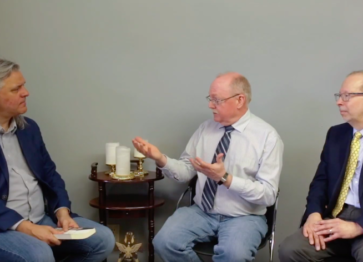When I wrote the article entitled “Church Renewal in the Digital Age” (Post-Christendom Studies 3, 81-111), I could not have predicted the changes that congregations large and small would soon be facing because of COVID-19. Congregations that had already adopted digital media were able to move quickly to provide a semblance of congregational life online, including online worship services, small group meetings using Zoom, online youth and children’s activities, and even opportunities to donate electronically. Other congregations, especially those who resisted or simply had not bothered with digital media, found themselves without the necessary digital hardware and trained volunteers. Without the means to connect effectively and meaningfully with their members online, and with no way to receive donations electronically, many congregations struggled—in some cases even encouraging their members join online worship from other congregations.
Whether the pandemic is short-lived or continues for some time, the Christian church has been changed. Even if an effective vaccine is available fairly soon, congregations and the communities in which they are situated will not be the same as they were in 2019:
-
• Church members (especially older members) have quickly become adept at using technology for worship and for social connections. Many elderly people who had staunchly resisted digital media suddenly bought or borrowed tablets and iPads so they could communicate with their friends at church and watch worship services. Those people have entered the digital age and they will they will continue to use digital media once the pandemic ends.
• The quality of online worship has improved, not only with regard to “performance quality” but also with regard to understanding what it means to worship online. Previously, worship was designed mainly for people in the building with the option of watching online (the online audience being the afterthought); churches have now put money and skill and critical thought into the creation of online worship experiences of higher quality. The result will be that many congregants will prefer to worship online well after the pandemic is over.
• “Place” has changed. Working from home has now been joined by worship from home. People no longer worship only with people who live in geographic proximity—by meeting online, family and friends in faraway places participate together in worship. Congregations will need new, online ways to provide meaningful interaction (socially, spiritually) across longer distances.
• “Time” has changed. Although many online worshippers join the live feed at the traditional Sunday morning time, more people are watching at other times throughout the week. Some people will not want to go back to a Sunday-morning-only schedule. Once churches resume on-site worship, they will need to address the preference of many worshippers to meet at a time other than Sunday morning.
• Hierarchical control has been eroded. While worshipping online, individuals have been preparing communion elements at home and making choices about what church(es) to attend online each week. The result may be the erosion of the mystique of church authority and more empowered members. Those can be good things, if they are embraced and not resisted by clergy and other leaders.
• Traditional on-site teaching is replaced by hybrid teaching. The fact that most seminaries had to transition quickly to online learning platforms and methods will have the unintended result of modelling the use of digital media for religious instruction among this new generation of seminary students who will then apply what they experience in seminary when they teach in their congregations.
• There is potentially a much more diverse audience than will attend worship on-site on a Sunday morning. One pastor, a former student of mine, said several people he had been unsuccessfully inviting to church for years have begun chatting online with him about his sermons. Although unwilling to enter the church building despite repeated invitations, they are watching each week online. Online worship has provided access for people who might rarely enter a church building.
• Some congregations may make online worship their primary focus, even when on-site worship resumes. Some church members, and their leaders, have discovered that they prefer online worship online—it provides flexibility and convenience in ways that on-site worship cannot.
• The extent to which churches incorporate digital media into the life of the congregation may now be a more important factor for people considering a church to attend.
• Some people will not return to on-site worship services. They find online worship more meaningful, or more socially comfortable. Others find online worship more accessible in the face of physical disabilities or limited access to transportation.
I expect that many church leaders are waiting for the day when things return to “normal.” That would be a huge mistake. We need to learn from this unusual time. In every community and in every congregation, there needs to be careful thought about what we can understand about witness and ministry in a digital age. Wise leaders will not simply return to old ways of doing ministry without carefully asking what has been learned and applying new insights.
Steve McMullin is the Sheldon and Marjorie Fountain Professor of Evangelism and Mission at Acadia Divinity College in Wolfville, Nova Scotia.
*The views and opinions expressed in this article are those of the author and do not necessarily reflect the official policy or position of McMaster Divinity College or the Centre for Post-Christendom Studies.*




